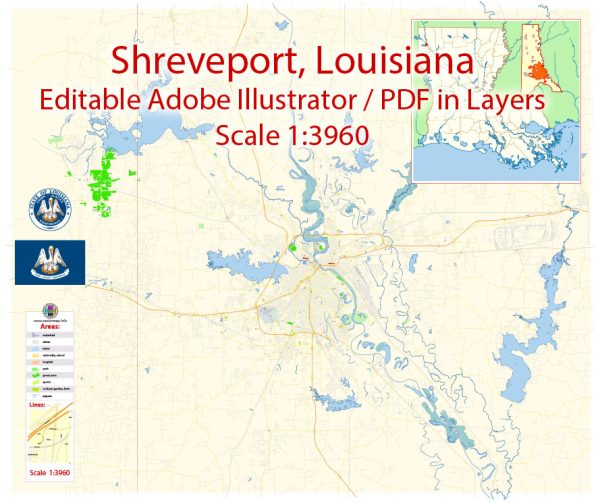Shreveport and Bossier City, both located in northwest Louisiana along the Red River, have a rich history of urban development that dates back to the early 19th century. Here’s an overview of their historical urban development:
- Early Settlement and Incorporation:
- Shreveport was founded in 1836 by the Shreve Town Company, a development corporation established to create a town at the newly established Red River logjam, which was later cleared by Captain Henry Miller Shreve.
- Bossier City, initially a small trading post, began to develop in the mid-19th century and was officially incorporated in 1907.
- Transportation and Economic Growth:
- The cities’ growth was significantly influenced by their strategic location on the Red River and the development of transportation networks.
- The completion of the Texas and Pacific Railway in the 1880s and the arrival of steamboats along the Red River played crucial roles in the economic development of both cities.
- Oil and Gas Industry:
- The discovery of oil in the region in the early 20th century, particularly the Bossier oil field, led to an economic boom. This period of prosperity contributed to the growth of Shreveport and Bossier City.
- Military Influence:
- During World War II, the area experienced substantial growth due to the establishment of Barksdale Air Force Base in Bossier City. The military presence had a lasting impact on the local economy and demographics.
- Civil Rights Movement:
- Like many Southern cities, Shreveport and Bossier City were also affected by the Civil Rights Movement. The struggle for civil rights and desegregation had an impact on the social and urban landscape of the cities.
- Gaming and Tourism:
- In the 1990s, both cities embraced the gaming industry with the opening of riverboat casinos. This development contributed to economic diversification and increased tourism in the region.
- Urban Renewal and Redevelopment:
- Over the years, Shreveport and Bossier City have undergone urban renewal and redevelopment projects to enhance infrastructure, revitalize downtown areas, and attract businesses.
- Cultural and Educational Institutions:
- Both cities have cultural and educational institutions that have contributed to their urban development. Shreveport is home to museums, theaters, and educational facilities, while Bossier City has developed its own cultural amenities.
- Population Growth and Demographics:
- The population of Shreveport and Bossier City has grown over the years, and the demographic makeup has evolved, reflecting broader changes in the United States.
The history of Shreveport and Bossier City is a dynamic tapestry of economic, social, and cultural developments that have shaped the urban landscape of these two Louisiana cities. The interplay of factors such as transportation, industry, military presence, and cultural institutions has contributed to their unique identities and ongoing growth.


 Author: Kirill Shrayber, Ph.D.
Author: Kirill Shrayber, Ph.D.